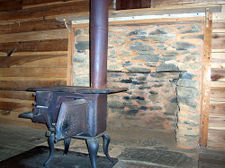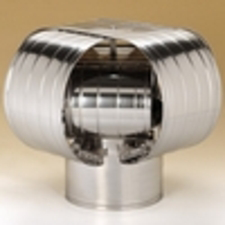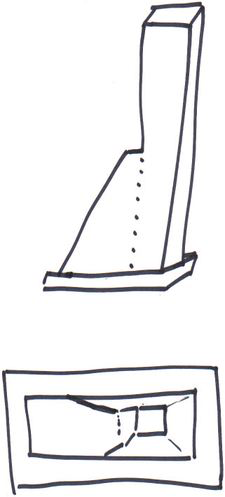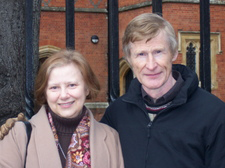by blogediter | Feb 8, 2019 | Chimney Plugs
Q: I accidentally ignited my gas fireplace under my Chimney Balloon (someone had removed the red reminder card from the gas spigot). It fell out of the chimney within 10 seconds. Can I patch the burn hole in my Chimney Balloon? At what temperature does the Chimney Balloon melt and burst? – JG
A: JG, Well your Chimney Balloon did exactly what it is supposed to do when a fire is lit under it, but unfortunately it is not repairable when melted. The hole is going to be just too big.
The answer to your second question is 180 – 220 degrees Fahrenheit it the average melting point of the Chimney Balloon if it is exposed to flame. Your gas fireplace came up to that temperature very rapidly, as gas fireplaces tend to do. Wood fireplaces tend to get to temperature a little slower, but it doesn’t take long for the Chimney Balloon to sacrifice its life for yours. – Jason

by blogediter | Feb 4, 2019 | Chimney Problems
Smokey House
Q: How can I stop the strong burnt odor smell from the fireplace and from my home? It is even there when I am not using the fireplace and it is an unpleasant smell. -GHJ
A: GHJ, The first thing you have to do is stop the odor at its source by closing off the flue and chimney airtight. Your damper will not do this since it is metal and it will not lend you a tight enough seal. You can use a chimney plug or a chimney pillow to seal it off so no more odor will descend the chimney. The creosote up there can give off a surprising amount of stink especially if the wood was moist or pitchy.
The white vinegar trick will work very well if you put a large flat bowl of it in the center of the room for about 24 hours. With kids or pets, this may not be very practical.
If the weather is nice you can also open the house up and use fans to exhaust the air outside. Turn your furnace off before you do this though. As my mother always said, “No sense in heating the neighborhood.”
If you need the smoke smell out of a surface then put baking soda on it overnight and vacuum it off in the morning. – Jason
The real issue of this question is indoor air quality. Read more about indoor air quality at http://www.theworldwomenwant.com/yourworld/home/air.php?page=ar

by blogediter | Feb 1, 2019 | Chimney Problems
Baffled chimney Cap
Q: Jason, whenever we have a really good fire in our fireplace, the whole house gets smokey. The flew is open so I’m not sure why. What should we do to fix this? I called my fireplace shop and they said to open a window a crack, that seems counter-intuitive since it is 5 degrees outside. I kind of like being warm.
A: I always get a kick out of people who say if your fireplace is smokey when you use it just open a window a little. Those people must not live in a cold climate because who wants to open a window when it is cold outside?! Tell them: “I live in Minnesota for crying out loud!”
Honestly, the best thing you can use to keep smoke where it belongs is some glass doors for the fireplace. They will keep the smoke and the sparks in and keep you from loosing quite so much interior heat to the combustion process and the suction of the chimney draft.
Another option is a directional wind may be blowing down at your chimney. Often winds can bounce off nearby trees and push wind currents down at your chimney. In this case, a baffled chimney cap will do the trick. My fathers Avalon wood stove had this problem and a baffled cap fixed the issue. See the image below of the baffled cap.
Remember to close that damper up good and tight when the fireplace is not in use. If you still have outside air entering even with the damper closed. Get a plug like a Chimney Balloon and it will keep the room more comfortable.

by blogediter | Jan 30, 2019 | Chimney Plugs
Mikes Chimney
Q: Jason, We are trying to measure our chimney interior, but it is definitely impossible for us to get an accurate measurement. I personally thought it was about 24″ x 15″, while my financée thinks it’s 16″ x 14″…
We need to guess because we cannot reach the part where it begins to shrink in size. Nor will be able to stand in the chimney to place the Chimney Balloon inside. Currently, the only option we have is to lay on our back and reach upwards…Any suggestions?
We just moved into this house last month, and have realized that there is no damper. I personally noticed this when we got an $1100 oil bill after only 3 weeks..so all our heat escapes straight out the chimney. Any suggestions?
Also, the shape of our chimney is not at all like any of the examples you have on your site. How do we get some help on sizing, and learn exactly where to place the chimney pillow. We would like to get this in place as soon as possible, as it’s REALLY cold this time of year! Would it help if I drew an approximation of what our chimney looks like, and sent that your way to help? An immediate response would be greatly appreciated. Thanks-OTCR
A: OTCR-That drawing was very helpful, thank you. I have a few more questions for you before I answer with the best location. Is the inside surface of the chimney a rough material like brick or is it metal lining? Down near the base (the bottom of your drawing) is that the hearth opening? Does the top of the hearth have parallel walls? Regarding the lip drawn at the bottom of the drawing, is that a ridge at the top of the hearth? – Jason
Q: Jason – The chimney is definitely brick. Here is a scanned copy of what my chimney looks like. the bottom drawing is the view when laying on one’s back and looking up. Does this help with deciding the size and location of the Chimney Balloon?
As for the hearth, or what I believe you’re asking, there is a lip and then it opens up again before it becomes narrow. it only looks to be parallel at the very top where the chimney levels off and goes straight up. The bottom picture is exactly what i/we see when I lay on my back and look directly up.
(my fiancée drew the picture!!). I would guess that the opening is almost parallel. – OTCR
A: OTCR- Great, that is the best of all situations for surface texture and location. The slant of the chimney walls will force the top side of the Chimney Balloon downward, and the lip will force the bottom of the Chimney Balloon upward, effectively sandwiching it into place. The texture of the brick will also help the Chimney Balloon grab and seal to the sides of the flue wall.
So, measure the length and depth (width) of the opening just above that lip. When you know what those dimensions are, you can email them to me and I will let you know the size you need. There is a high probability that this will require a standard size Chimney Balloon. But custom sizes are available up to 3 feet by 6 feet in dimension.
Q: Jason – Okay I did the best I could when measuring just above the lip… I got 24 inches (or JUST short of 2 feet) by 14-15, possibly even 16 inches… boy is it cold in there… it’s definitely wasting our heat and we just had a huge snow storm…OTCR
A: OK a custom 24×16 would be the best fit for your fireplace. Unfortunately, it is a custom size that will take 14 days to build but I will get a hurry-up on your order and see if we can get done earlier. I feel very bad for you with that $1100 heating bill. – jason

by blogediter | Jan 28, 2019 | Chimney Plugs
As the United States Manufacturers Representative for the Chimney Balloon product line, I get the occasional honor and privilege to spend time with the inventor of the Chimney Balloon, David Woodman and his delightful wife Irene. In January of 2007, I took my first trip across the Atlantic to spend time with David and Irene as they hosted me at their home in Aldershot, England. See pictures below.
I was intrigued by the fact that David had worked on a variety of engineering projects over his well-traveled lifetime. Some of his most complected engineering projects included controls and design for British battleships, and complicated solid state electronics and robotics for assembly and manufacturing. On these and other smaller manufacturing projects David acquired a mastery of knowledge in plastics and metals properties and attributes.
David and Irene were wonderful hosts. They are proper and warm and inviting people with wonderful stories and a scrapbook full of travels. They have a real appreciation and knowledge of architecture and history. Irene also makes a mean espresso that managed to fend off my jet-lag for hours.
Their home “Victoria House” was a spacious 3 story home with ample room to host, do business, and relax. I was enamored with the AGA stove and the built-in espresso maker in the kitchen. With 5 fireplaces they had a variable showroom display of Chimney Balloon applications. It was no wonder David invented Chimney Balloons, it was purely out of necessity!



